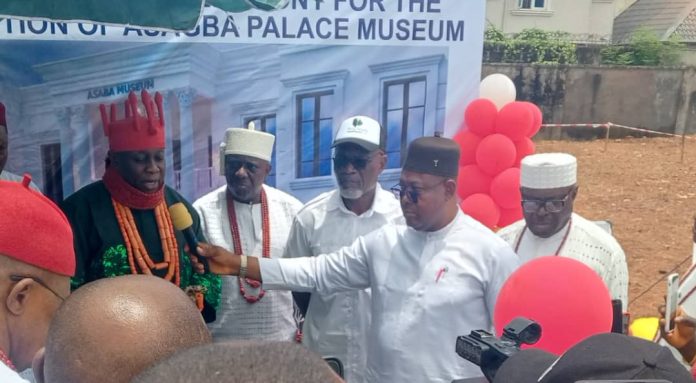…As Tony Ndah Foundation Get Accolades
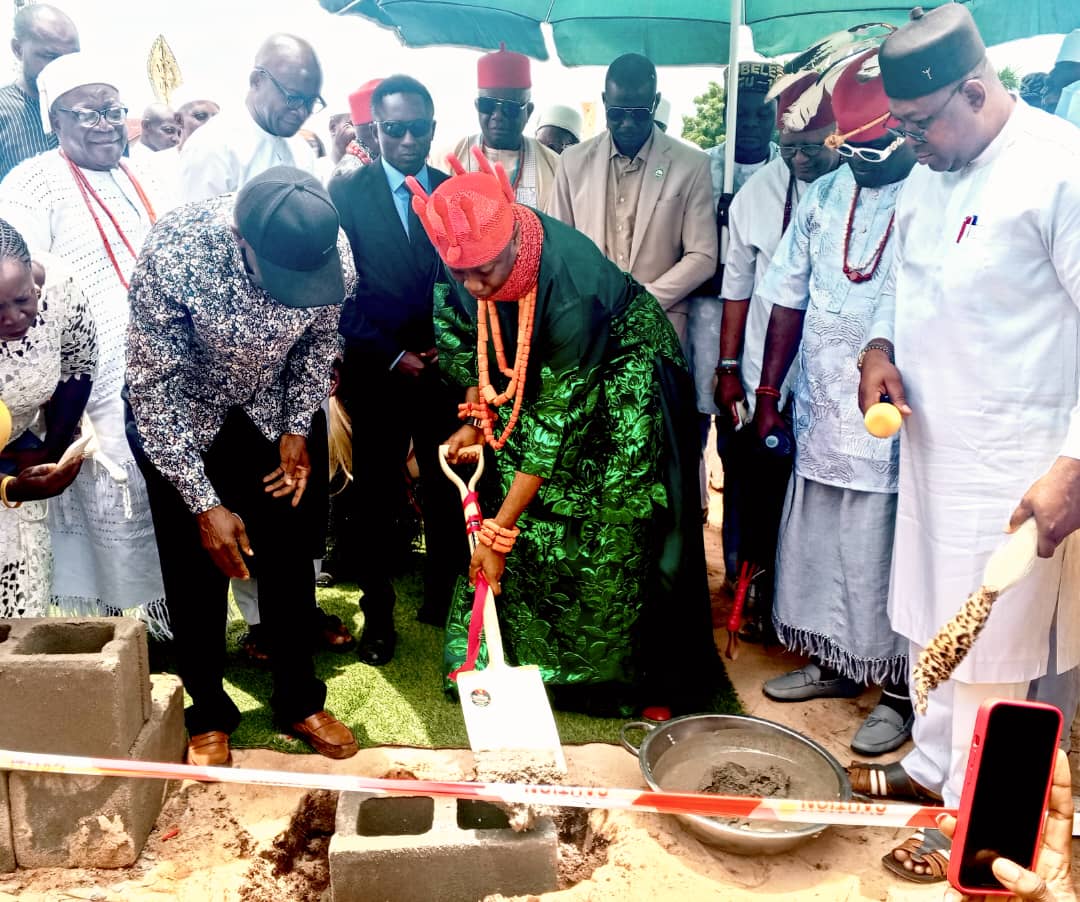
BY RITA OYIBOKA
The heart of Asaba beat differently on the day history was written, with both tradition and modernity converging in a rare spectacle of culture, pride, and vision for the future.
The palace grounds of the Asagba of Asaba came alive with a blend of colour, tradition, and rhythm as the community gathered for the foundation-laying ceremony of the Asagba Palace Museum, an edifice sponsored by Tony Ndah Foundation and envisioned to preserve the rich heritage of the Asaba people.
From the vibrant dances to the stately presence of royalty, every detail of the ceremony spoke of unity, culture, and a determination to honour the past while building for the future.
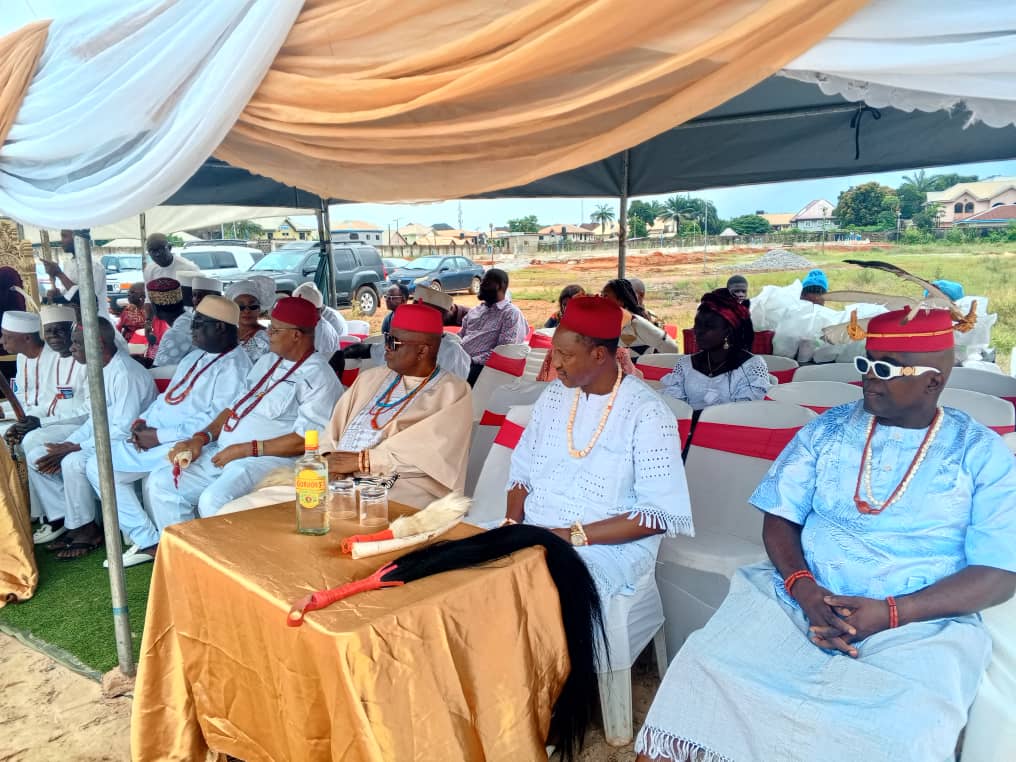
The Atmosphere: Colour and Culture on Display
Long before the first note of the formal proceedings, the atmosphere at the palace was charged with anticipation. The expansive grounds had been transformed into a cultural theatre. White canopies flapped gently in the breeze, and the scent of freshly trodden earth mingled with wood smoke rising faintly from nearby, creating an atmosphere both festive and solemn.
The people of Asaba, sons and daughters both at home and from the diaspora, had turned out in numbers, dressed in pure white native attire, looking like a flowing sea of purity and pride, their garments glistening under the faint morning sun as if heaven itself had poured down a river of ancestral elegance upon the gathering.
The chiefs, in full regalia, were a spectacle of dignity. Clad in flowing white robes, their dressing was completed with caps that told stories of hierarchy and identity; some wore deep red caps, others white, while a few adorned feathers on their caps, marking their traditional ranks. Their presence added an air of solemn grandeur, as though the ancestors themselves were silently witnessing the day’s proceedings.
The Egwuota dance troupe took their turn, drumming and singing in a rhythm that seemed to echo the heartbeat of the land. Their performance was no ordinary welcome; it was reserved for royalty. The steady pulse of the drums and the chorus of voices heralded the arrival of the monarch himself.
The Asagba’s Arrival: Majesty in Green and Red
When the Asagba of Asaba, His Royal Majesty, Professor Epiphany Chigbogu Azinge, SAN, OON, made his appearance, the entire atmosphere shifted. A hush fell, then gave way to ululations and chants of loyalty. The traditional flute was blown, piercing the air with its sacred tone. The monarch was dressed in regal splendor, a flowing green robe that glistened with embroidery, his chest adorned with coral red beads that spoke of heritage and authority. Atop his head sat a radiant red crown, casting a glow that seemed almost deific.
Surrounded by his entourage of chiefs and palace officials, the Asagba moved with measured grace. Every step seemed deliberate, symbolic of the journey Asaba was embarking on with the museum project. His subjects bowed, others hailed in unison, as the Egwuota drummers intensified their beats, elevating the monarch’s arrival into a scene of pure theatre.
“Nna agu! Nna agu!” they greeted—the lion had come. From one corner to another, the monarch waved his staff, blessing the people as they responded with joyous chants. He later proceeded to his golden throne, set upon a leopard-skin stool, flanked by men in immaculate white.
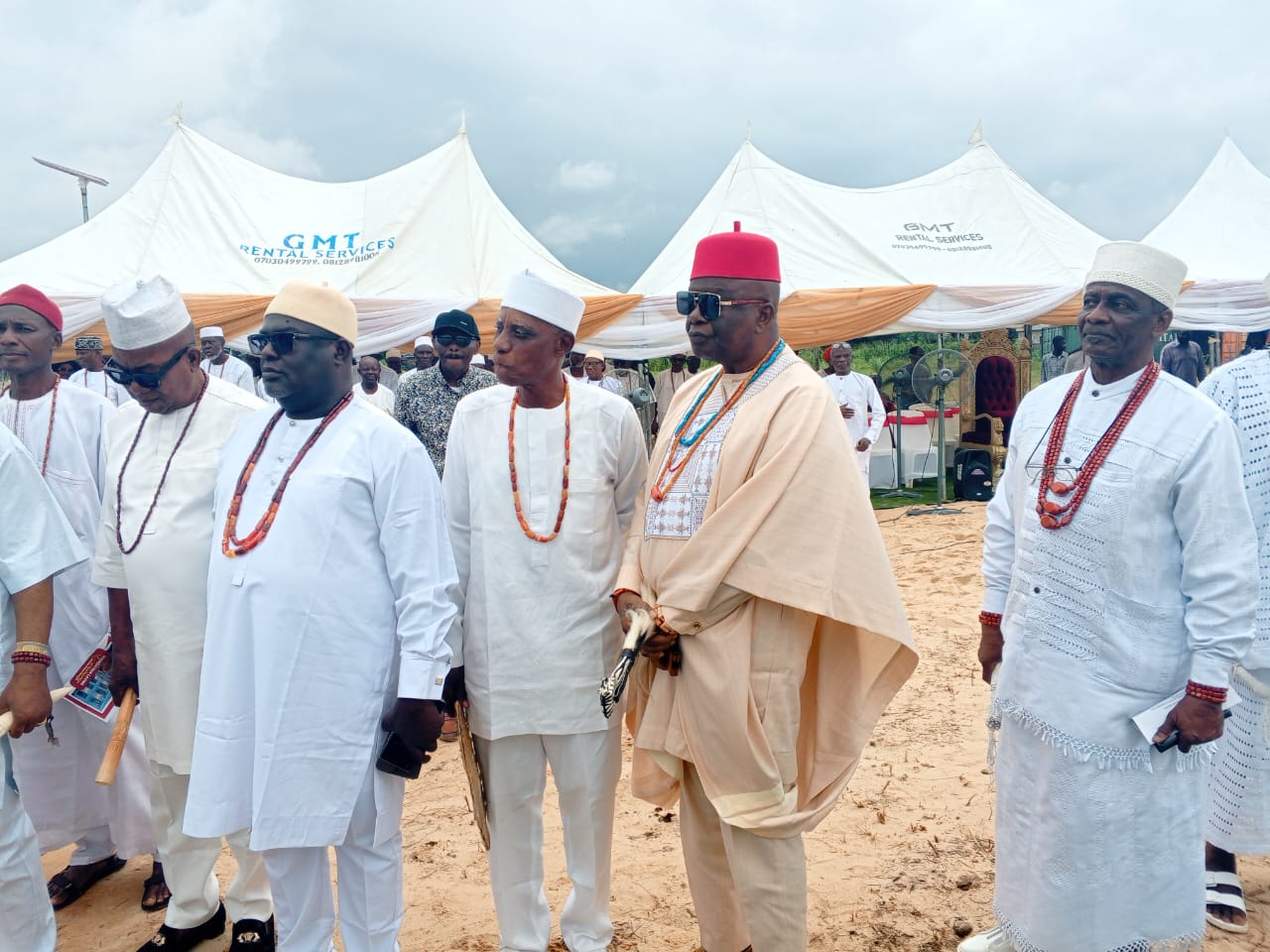
The Asagba’s Speech: A Call to Unity and Self-Reliance
When the time came, the Asagba addressed his people. His words were not just a royal speech; they were a manifesto of unity and progress.
“The work for the progress of Asaba,” he began, “is for all and not just for the Asagba. And you all are showing that the job is for us all.”
The monarch explained the significance of the day, noting that the Asaba Heritage Museum was not captured in the initial contract agreements for palace development, but through the generosity of one of their own, Ogbueshi Tony Ndah, the vision had become a reality. He thanked Tony Ndah for funding the project through the Tony Ndah Foundation, stressing that the community must never wait for the government alone to solve their needs.
He assured the people that the contractors had promised completion by December 2025, in time for the grand handover during his second coronation anniversary in 2026. He announced further commitments: the NDDC and the Chief of Staff to the President had promised funding for complementary projects; Emma Odiaka had pledged to build the palace library; and SMEDAN, alongside Ngozi Okolie, had committed to awarding the contract for the pavilion.
“We are confident,” the Asagba declared, “that come my anniversary, this museum and complementary structures will be complete. It is a signal to us all, home and abroad, that progress is in our hands. The government cannot do everything. This is a clear example that we, as a people, can rise and do things for ourselves. I thank you all for your solidarity and pray that our ancestors will bless this effort to completion.”
His words, carried by the palace grounds, drew thunderous applause.
Dancers as the Rhythm of the Day
But this work wouldn’t be complete without mentioning the dancers, whose performances gave the ceremony its rhythm. The Aguba dance group made a dramatic entry, their attire striking against the golden afternoon sun. They wore the traditional Akwa Ocha, the symbolic white fabric of the Anioma people, which shimmered as they swayed. The women crowned their look with bright orange geles tied in elaborate folds, their hands clutching fans that rose and fell in synchrony. Their dance was not mere entertainment; it was a declaration of pride, a visual poem of continuity between generations.
Foundation Laying: A Shovel of Promise
Following his speech, the monarch proceeded to the ceremonial site. Waiting there was a freshly dug square patch of earth, symbolising the beginning of the Asaba Heritage Museum. A gleaming shovel, tied with a bold red ribbon, lay ready. The moment carried deep symbolism, the marriage of tradition and modernity, hope and history.
With the crowd watching, the Asagba lifted the shovel, broke the earth, and laid the first foundation stone. The red ribbon danced in the air as the soil fell, and with it, the vision of a museum moved from dream to reality. Ululations and cheers filled the air as drummers picked up their beats once again, immortalising the moment in rhythm.
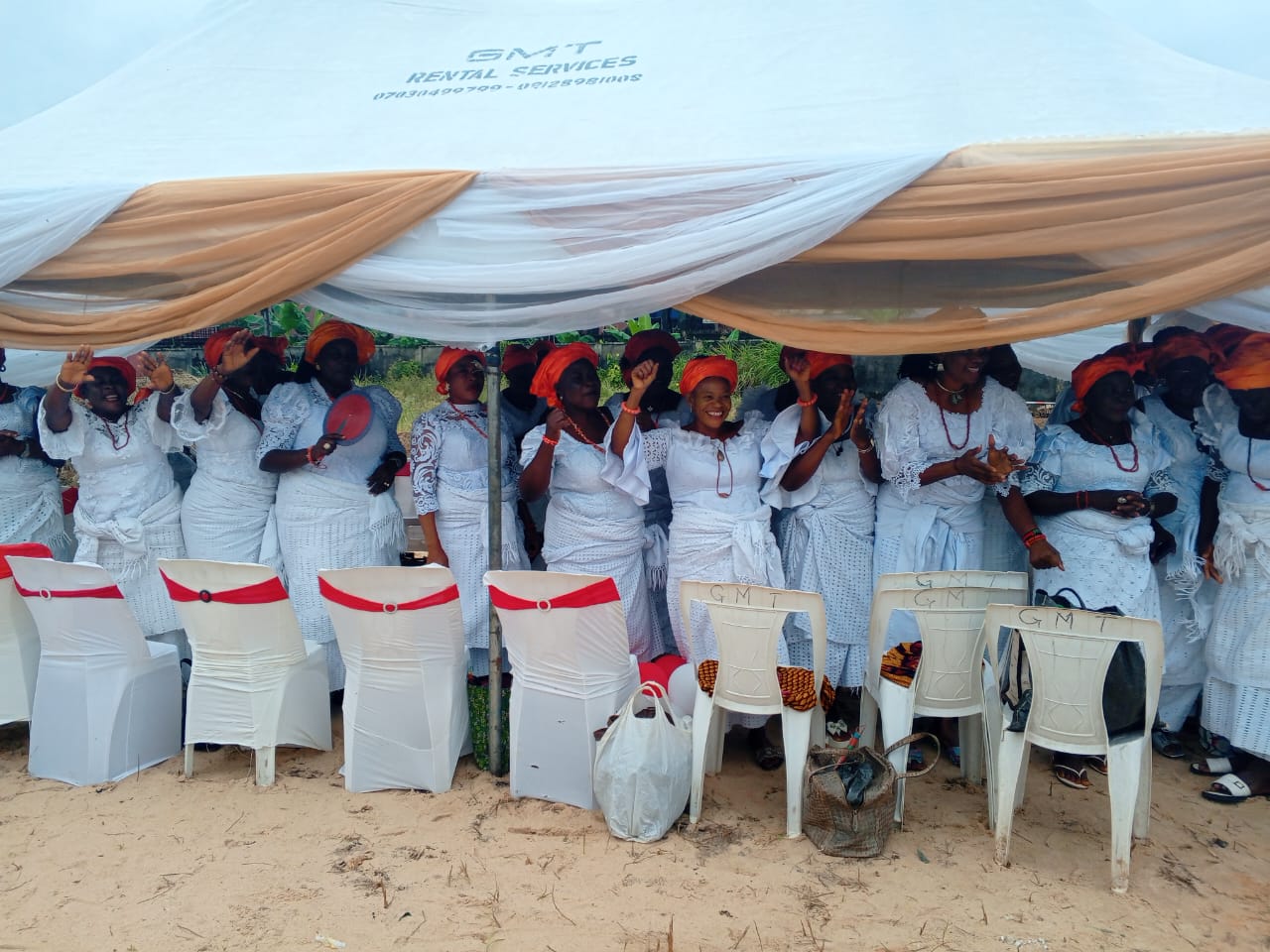
A Touch of Recognition: Award for Tony Ndah
In a particularly touching gesture, members of St. Patrick’s College Class of 1994 presented an award to Tony Ndah for his selfless contribution to Asaba’s heritage. Though represented by Mrs Christabel Ndah-Chukwudi, the message was clear: Tony Ndah’s name had been etched into the story of Asaba’s future.
Speaking on his behalf, Mrs Ndah-Chukwudi described the museum as “a beacon of cultural pride and historical preservation… a monumental step in reclaiming and celebrating the rich heritage and culture of the Asaba people.”
He highlighted its potential for tourism, education, and economic growth, stressing that it would not only serve Asaba but Nigeria and Africa as a whole.
Voices from the People: Interviews and Reactions
For many, the day was personal.
A native of Ogbe-Ogo, Ogbueshi Fidelis Ifeanyi Ndah, was visibly emotional.
“This event is a kind of cultural heritage. Building a museum is not an easy task. I must thank my loving brother, who took out his time and resources to build such a monument. And I thank the Asaba people for coming out en masse.
“This is not for us alone; people from across the world will come here to see our artifacts, both old and modern. I thank my community, Ogbe-Ogo, for providing this land. Since our Asagba came in, a lot of modernity has come. I give kudos to him.”
Likewise, Obi Dr. Benibe Ugboko called the event a milestone.
“It’s a foundation-laying ceremony for the Asaba Heritage Museum. Our Asagba is a good leader, innovative, and creative. This is for culture, education, tourism, and history. It is all hands on deck. Sons and daughters, both at home and in the diaspora, must join hands to see this project through to completion.”
Meanwhile, Engineer Emma Ogbogu, MD/CEO of PRO FEATS Limited, the construction company handling the project, promised excellence.
“This construction can never be anything short of first class. It is designed to last, with a 400-square-metre floor plan and a suspended floor. It will preserve our culture in pictures, statues, and writings. It is a one-stop shop for knowing how we were, how we are, and how we intend to be. The Monarch is a godsend, and we will deliver this project within the shortest possible time.”
Closing the Curtain: A Future Being Built
As the sun dipped and the drums faded, the significance of the day lingered in the hearts of all present. The Asagba Palace Museum, though still in its infancy, had already become a symbol of heritage, of unity, and of the people’s determination to build for themselves.
For Asaba, the foundation laying was more than a ceremony. It was a statement: that culture will not be forgotten; that history deserves a home, and that when a people stand together, even dreams carved from the dust of their ancestors can rise into monuments of stone and memory.
The palace grounds, once filled with music, began to empty, but the memory of the day will not fade. It will live on, in the beats of the drums, the chants of the people, and soon, in the walls of the museum itself.


